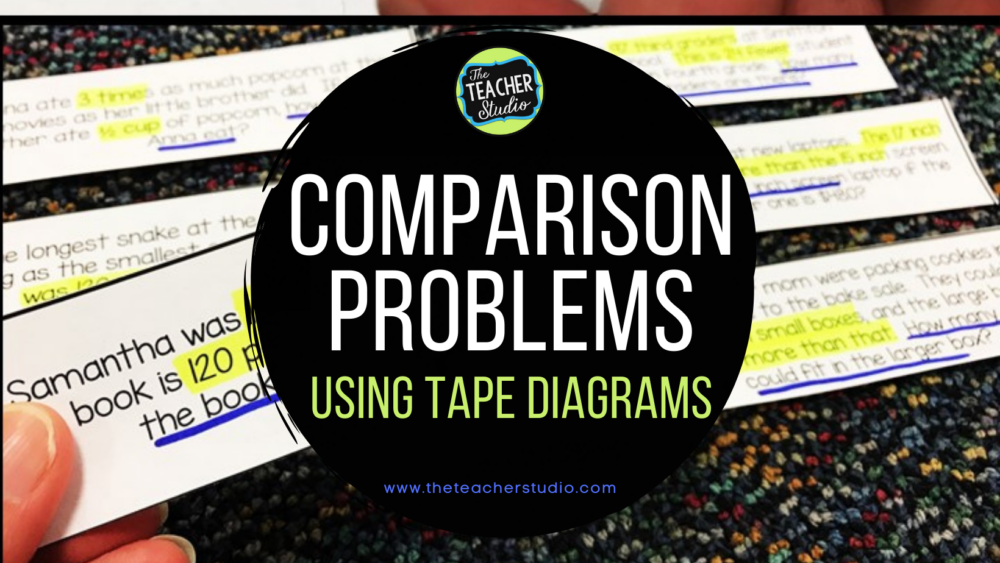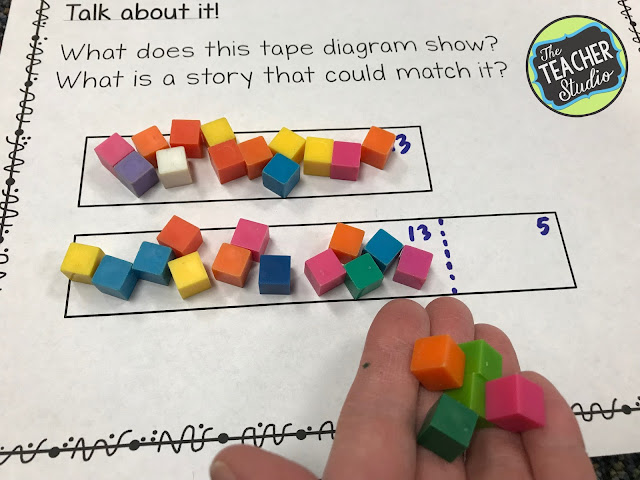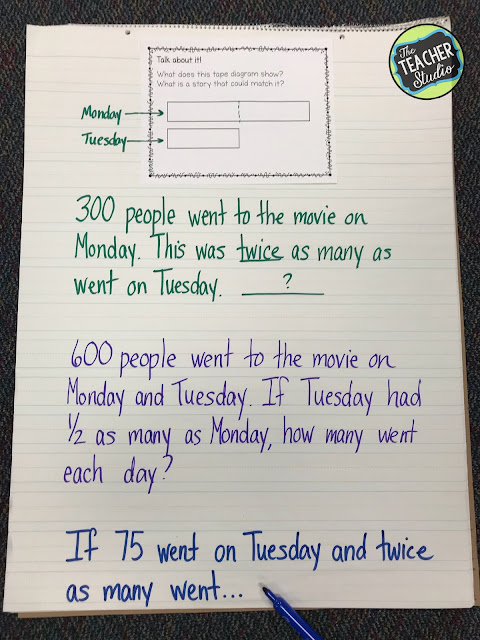Comparison Problems: Using Tape Diagrams to Represent Math Thinking
Word problems are a key part of rigorous standards everywhere, but teachers and students alike often dread tackling them. Even textbooks sometimes save them for the bottom few problems on a page or a separate lesson toward the end of a chapter. The thing is–word problems (at least good ones!) are the “real world” part of math. One type of word problems, comparison problems, can be particularly challenging for students. Let’s look at some teaching tips that might make them more accessible!
Critical Reading of Math Problems
As educators, we should always be striving to help our students understand that the skills we are teaching are them are FOREVER…not just to complete a math page or worksheet. One skill that we really want to make sure our students understand is the need to critically read math problems to figure out what is being asked, what information is given, and to make a plan for solving. So often we do the thinking and hard work for our students.
For example, just consider how many of our math books are organized. A lesson entitled “Solving Addition Stories” doesn’t leave much room for student thinking, does it? It seems pretty clear what operation students will need to choose! Providing students with a constantly spiraling variety of problems forces them to think for themselves, learn to look for key information in problems, and make solution decisions accordingly.
One idea? Use highlighters to find and notate important information. Underline or circle the question. One thing I do NOT recommend? Looking for key words like “fewer” or “total”. These words may seem like a quick fix for students…but they can lead them down the wrong path. How? How about this problem…
“Larry has 14 baseball cards. This is 25 fewer than his sister Kara has. How many cards does Kara have?”
By teaching “fewer” as a signal word that indicates subtraction, a student will certainly not think through this problem correctly!
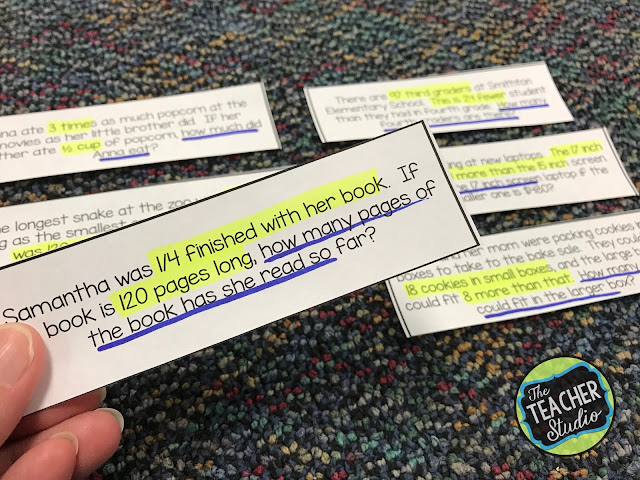
Visualization and Modeling with Comparison Problems
One strategy that can really help students make sense of problems is to be able to visualize and draw models of different problem types. Comparison problems–sometimes represented with “tape” or “strip” diagrams are a GREAT way to help students visualize the math! I thought I’d share a few ways that these can be super helpful for students–whether used as whole class lessons or for intervention groups.
Using a blank “template” or outline of a tape diagram with manipulatives can really help students see the comparison that appears in a problem. The photo below showcases a visual representation of the following problem:
Next Steps with Comparison Problems
As students get more adept at these problems, you might see that a sketch with only numbers placed in the diagram is appropriate. Check out this lesson where we “filled” a diagram and then brainstormed a ton of different questions that could work with this problem. Again, part of making sense of problems is realizing that the QUESTION matters.. Students need to learn to be detectives as they problem solve. Finding the missing part is the first step!
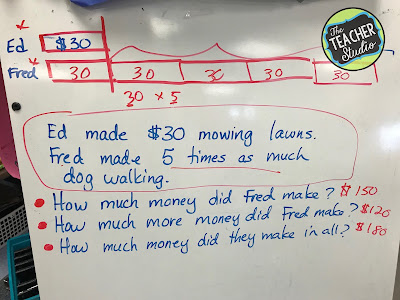
Another strategy to get students really visualizing is to take a blank diagram and create different stories to go along with them. This is a fantastic way to help students get flexible with their thinking. I start with modeling some problems and then have students progress to writing and sharing their own. It truly helps them understand the problems at a deeper level.
Hope you found this information valuable! These problems don’t HAVE to be as challenging if we help students bridge the gap between the problem and a meaningful strategy to solve them!

